site search
online catalog
FIRST MODEL MERRILL CARBINE

Hover to zoom

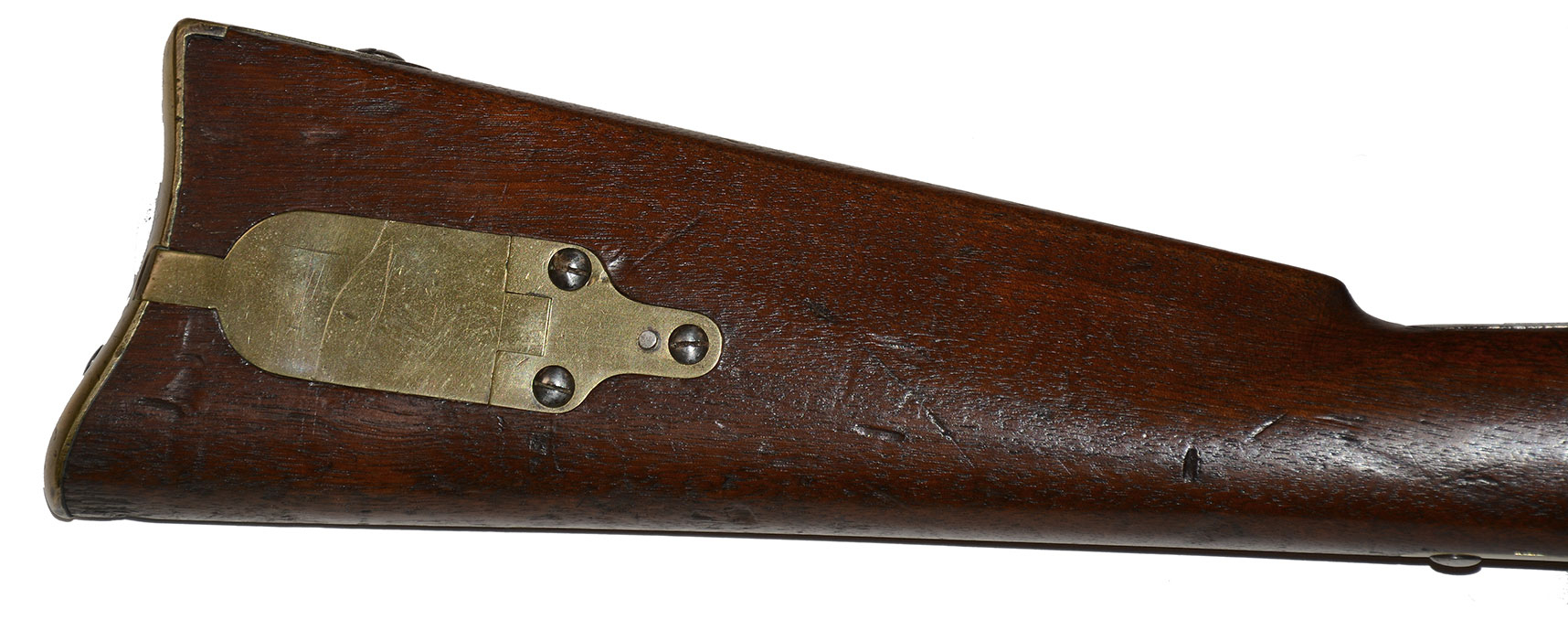
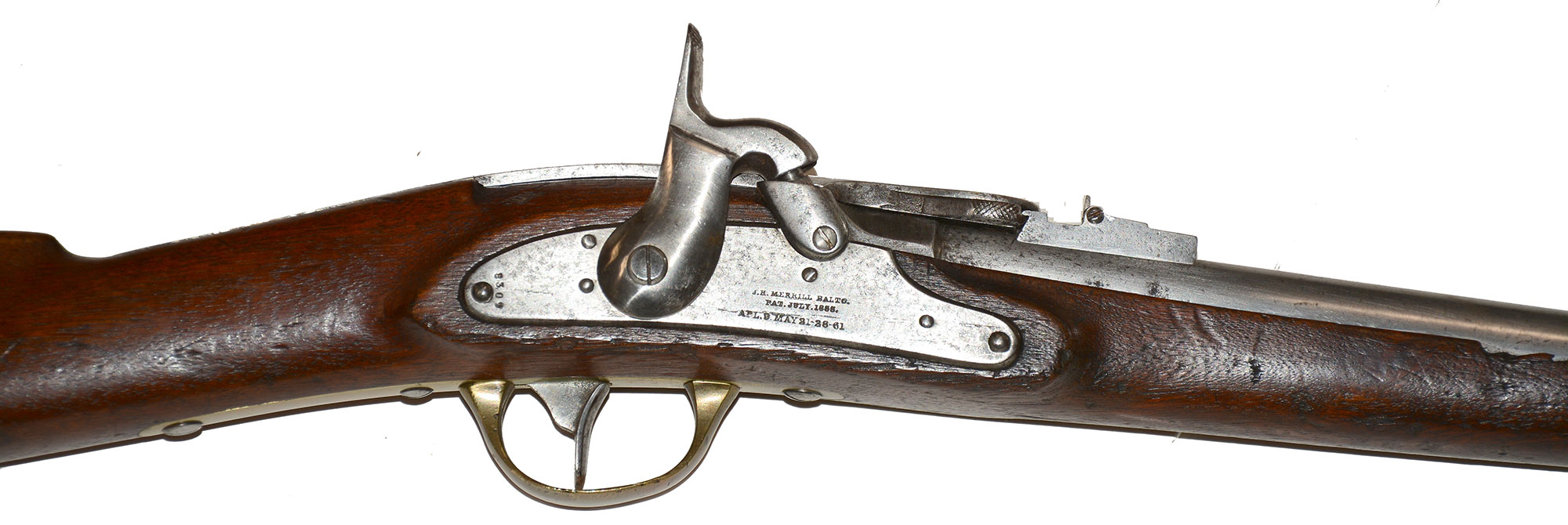

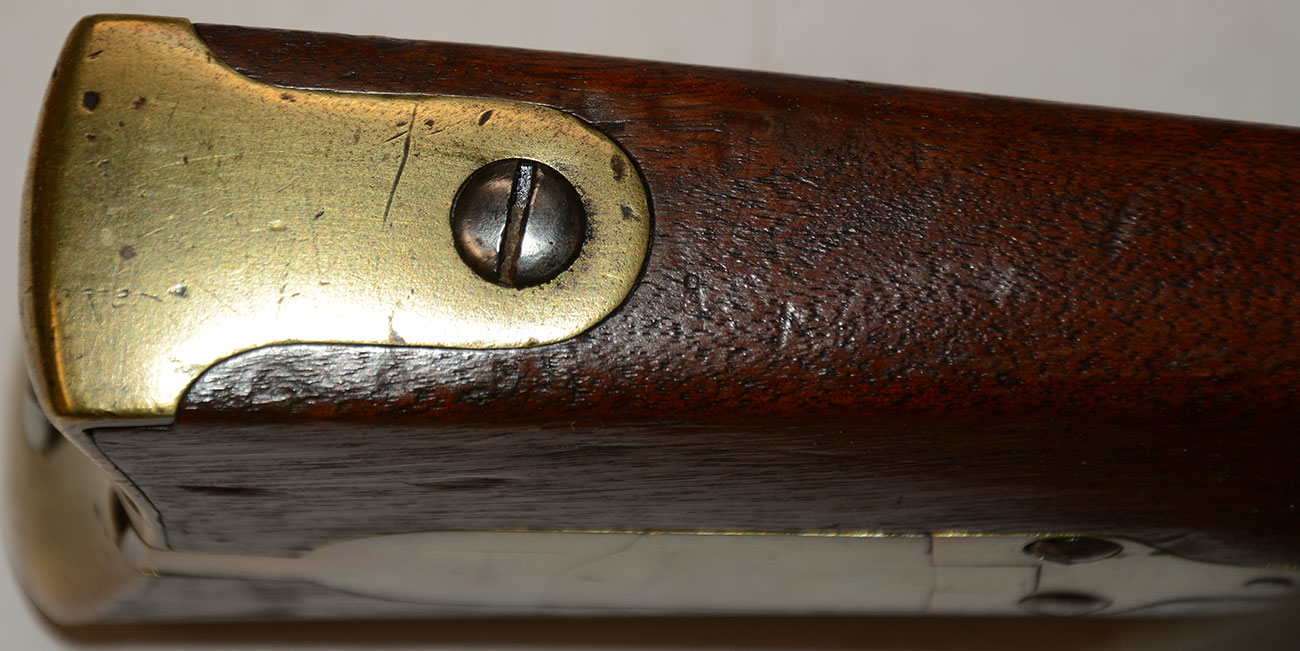
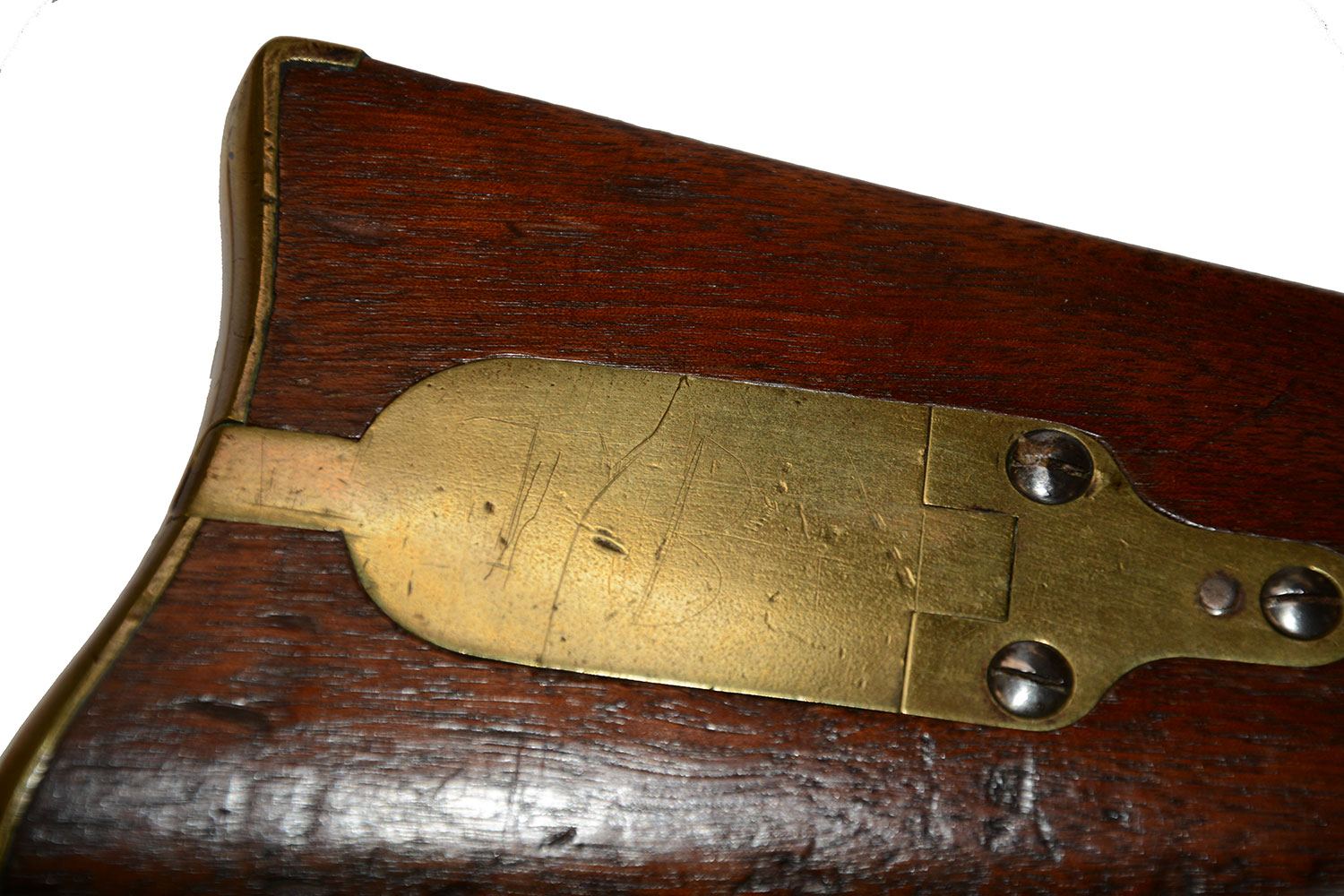
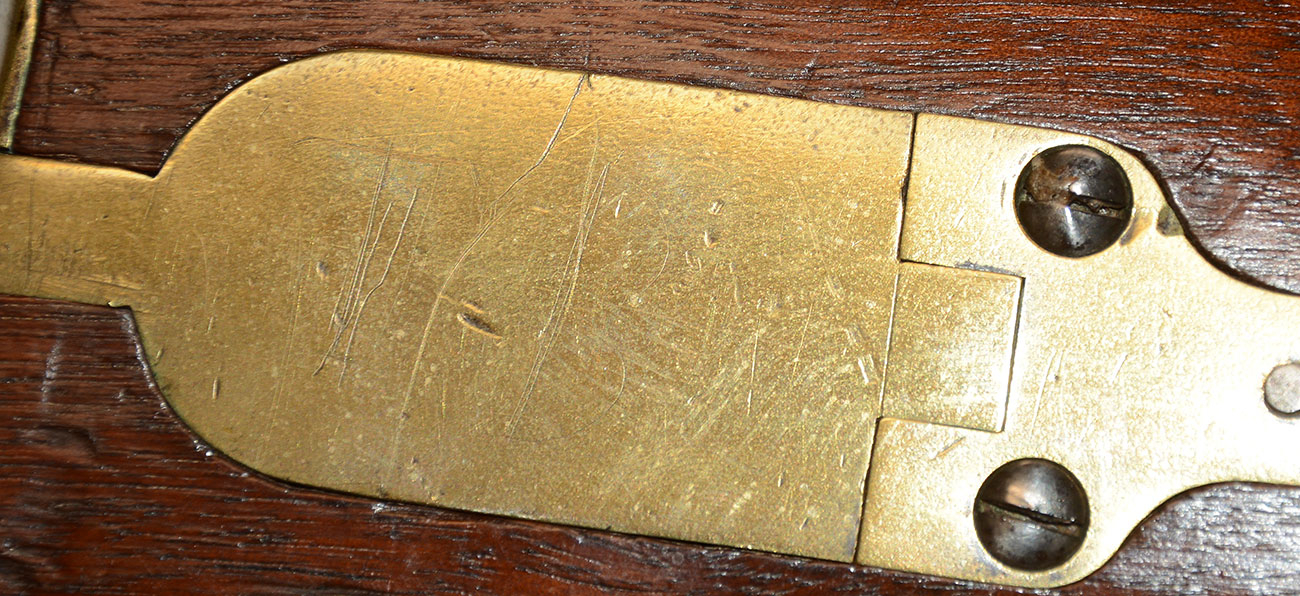
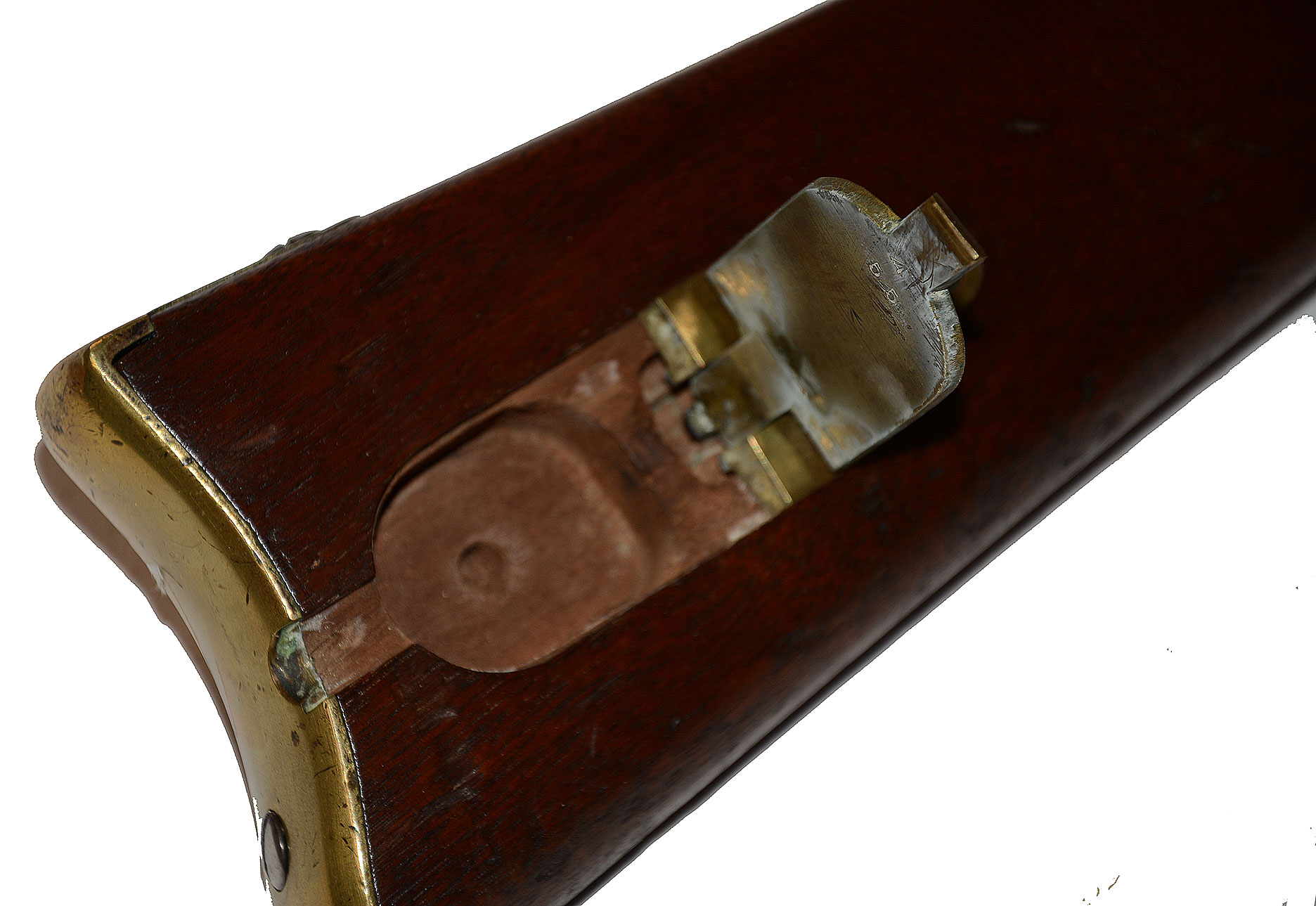
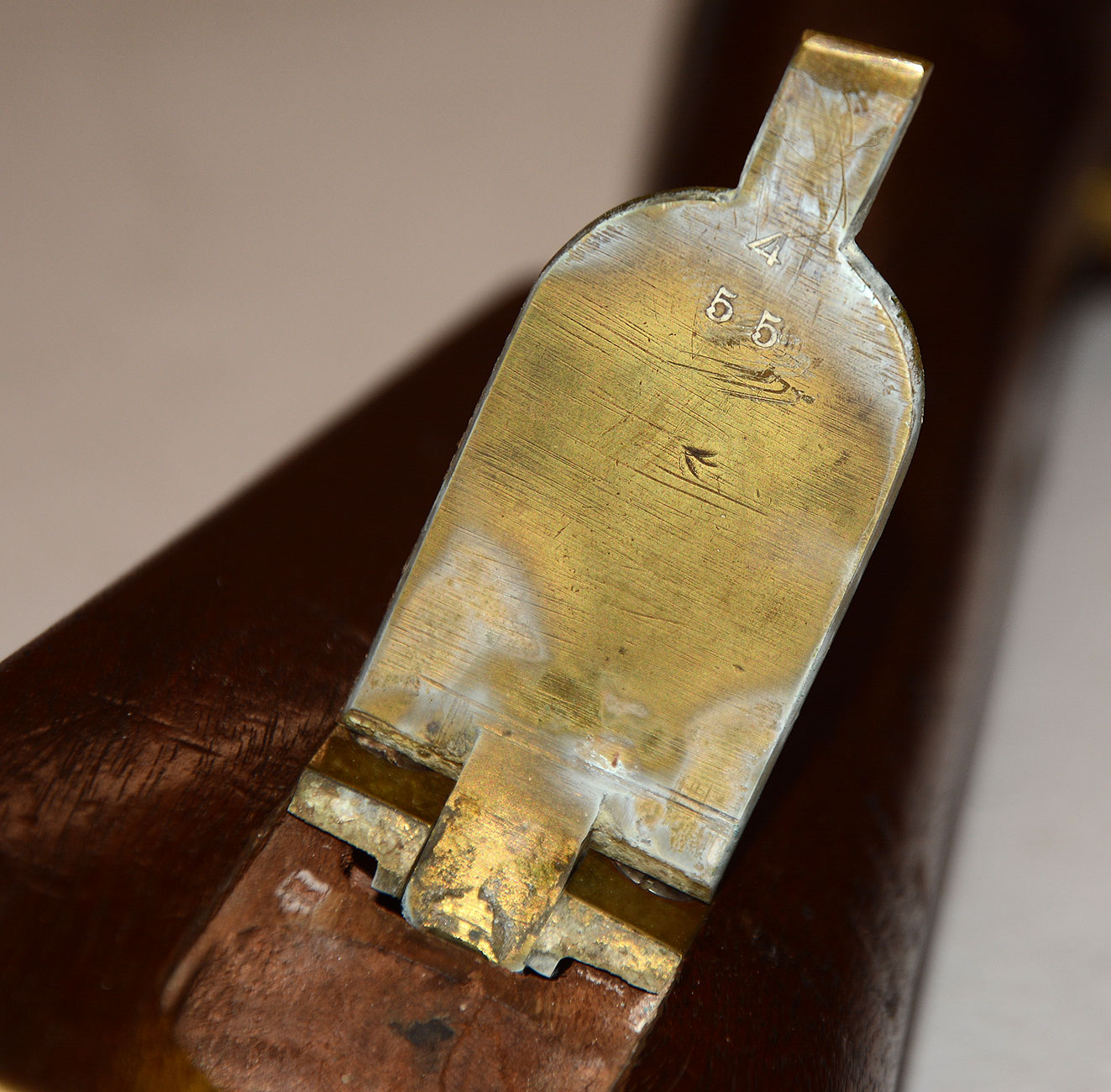
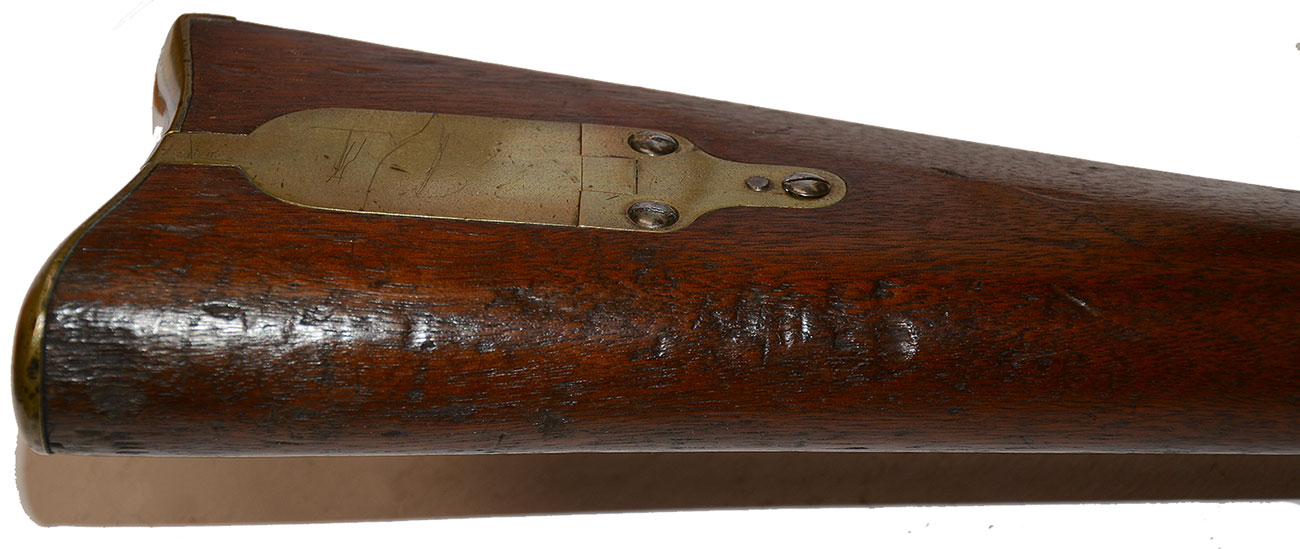

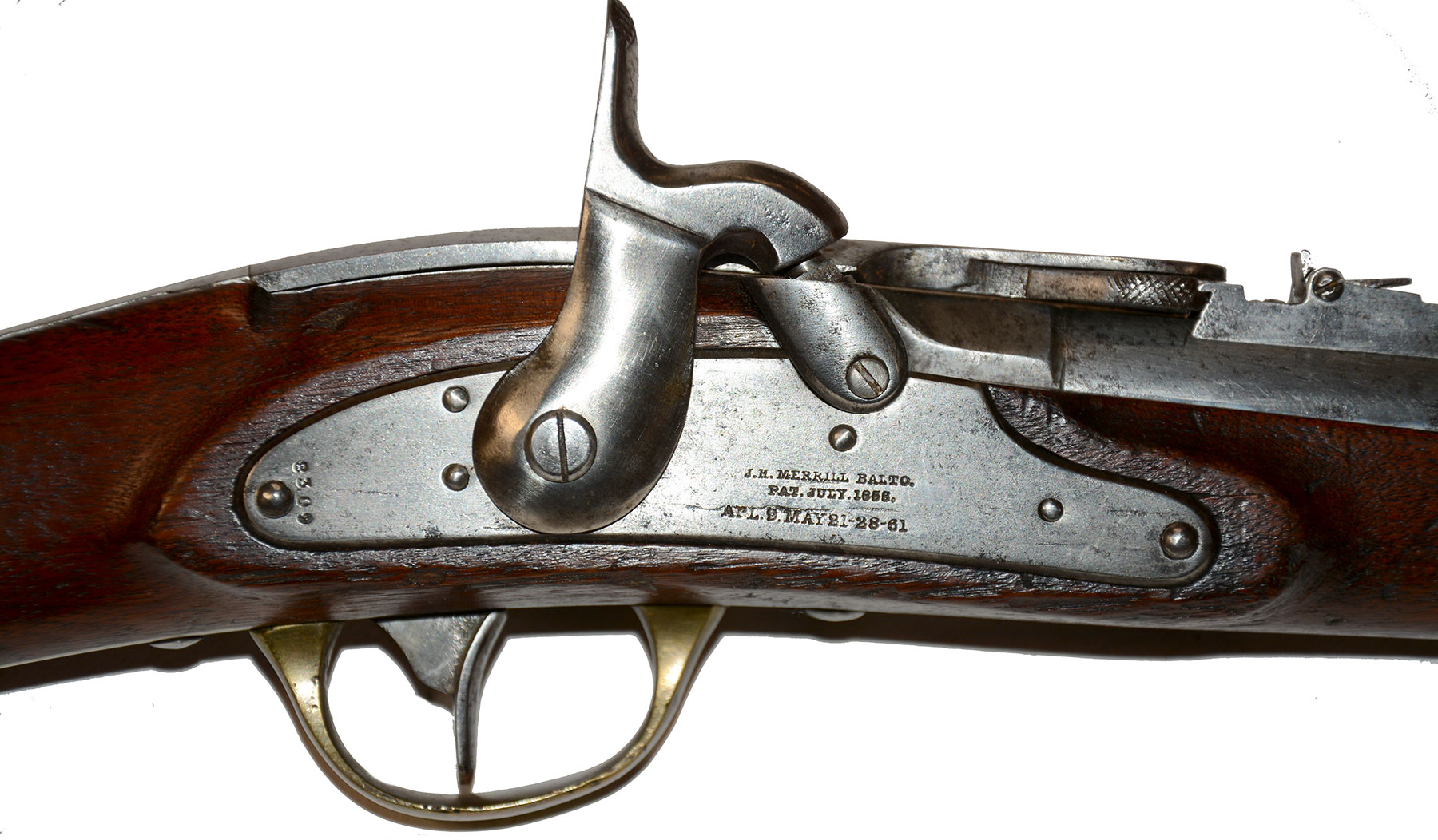
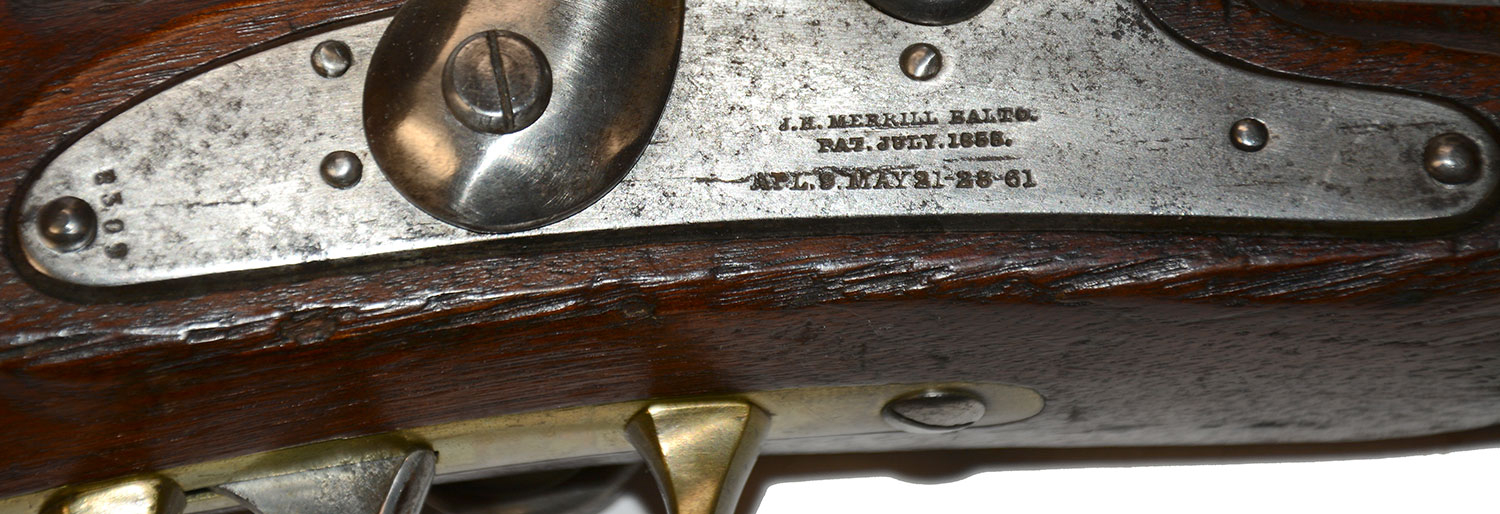

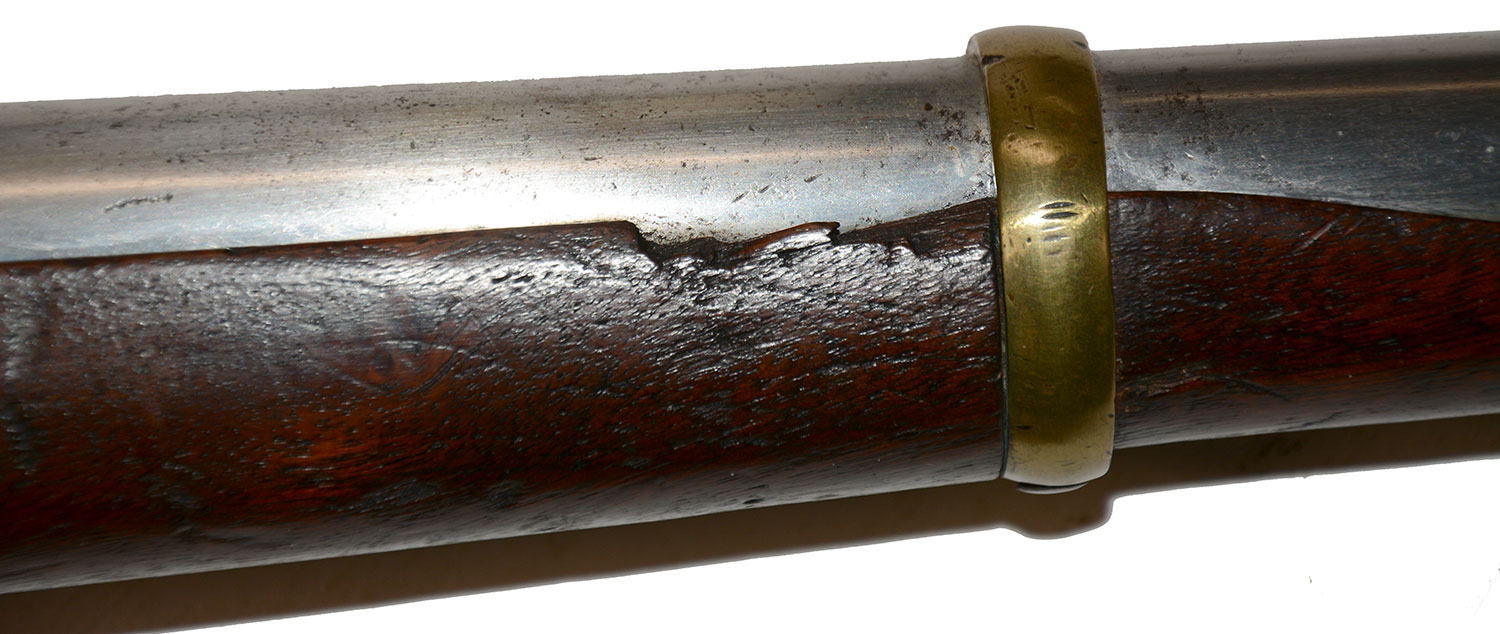
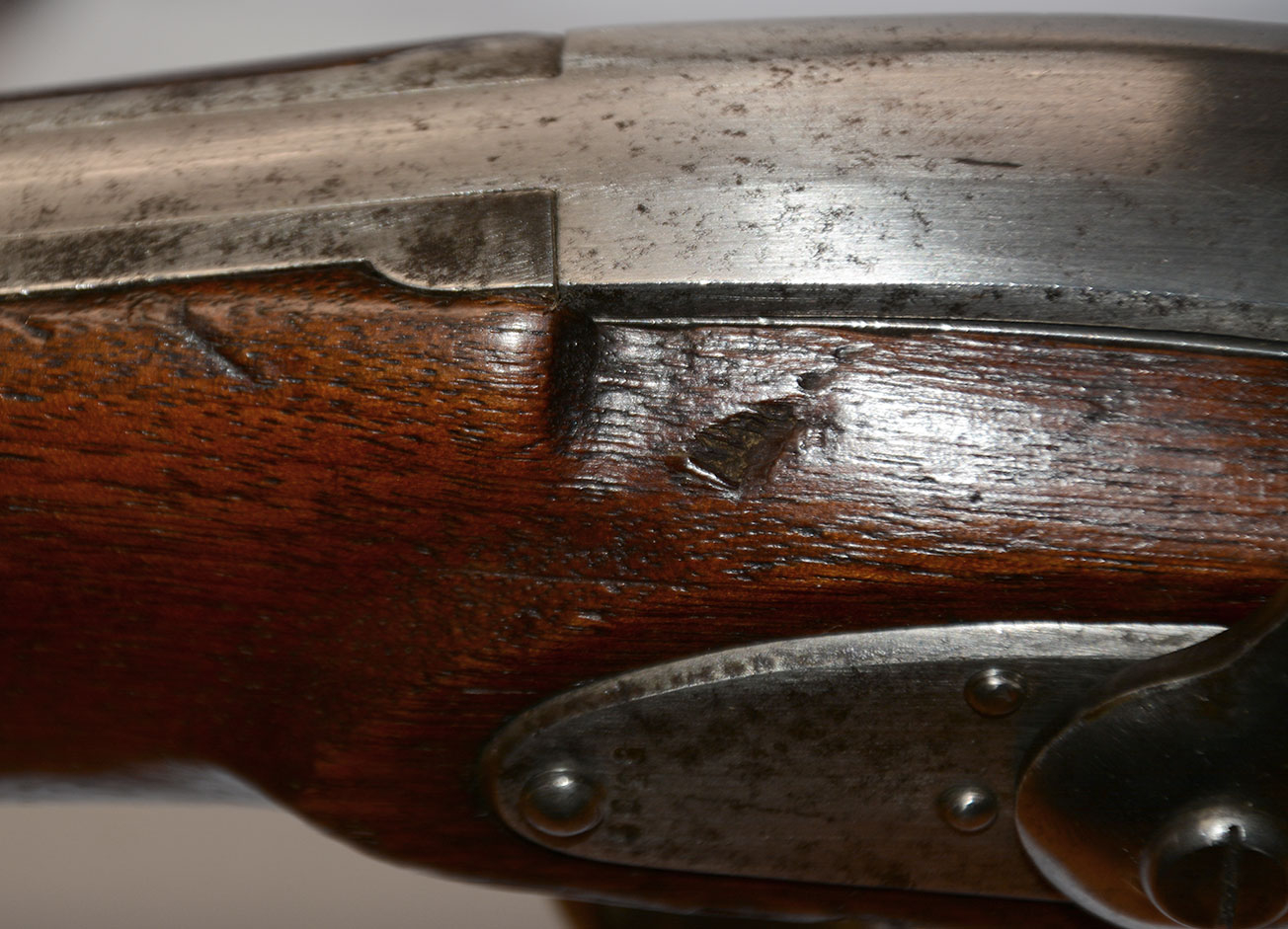
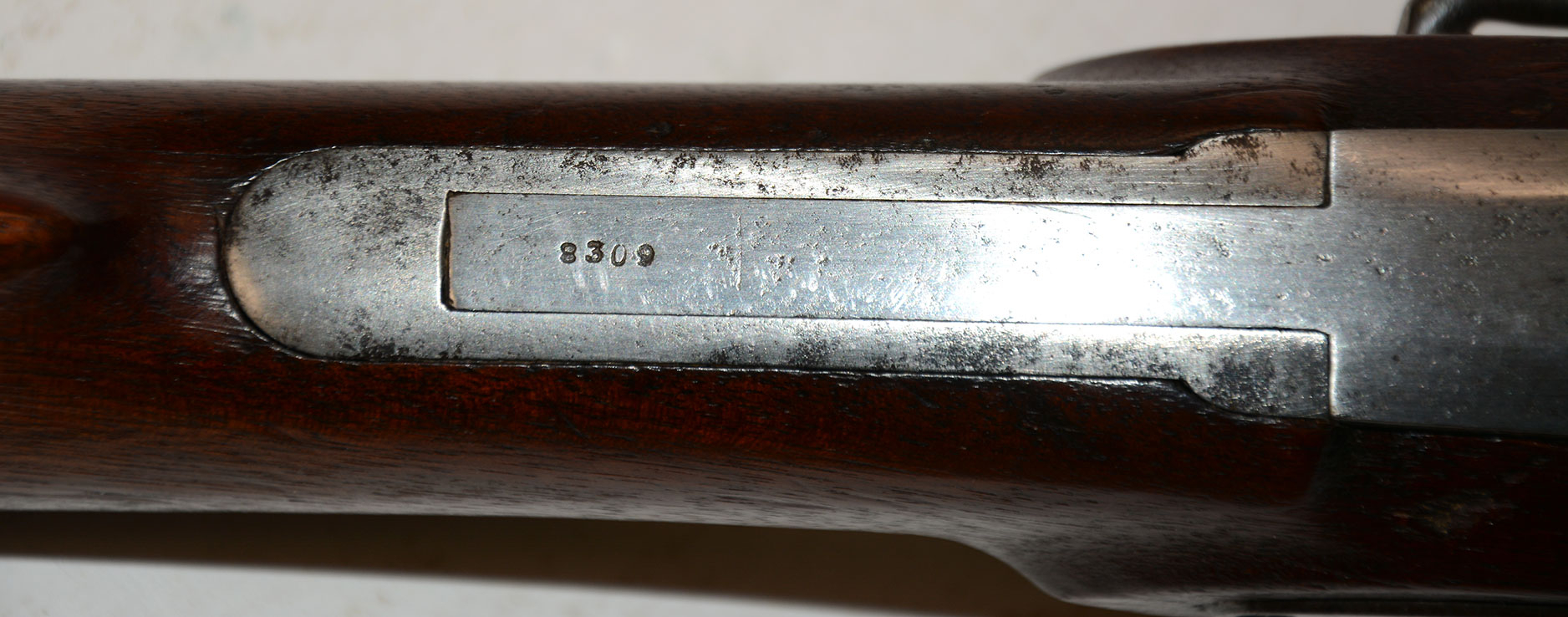
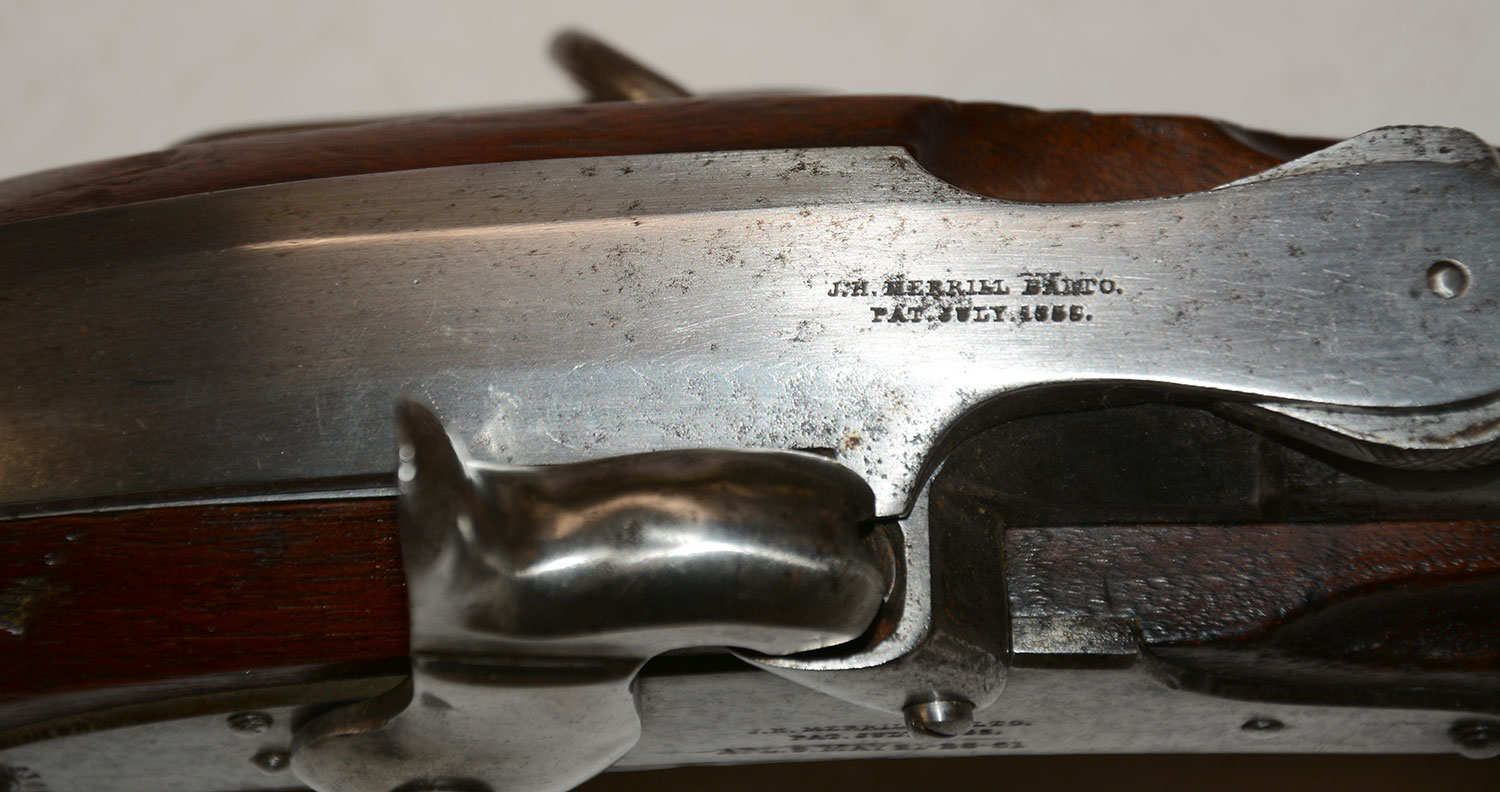
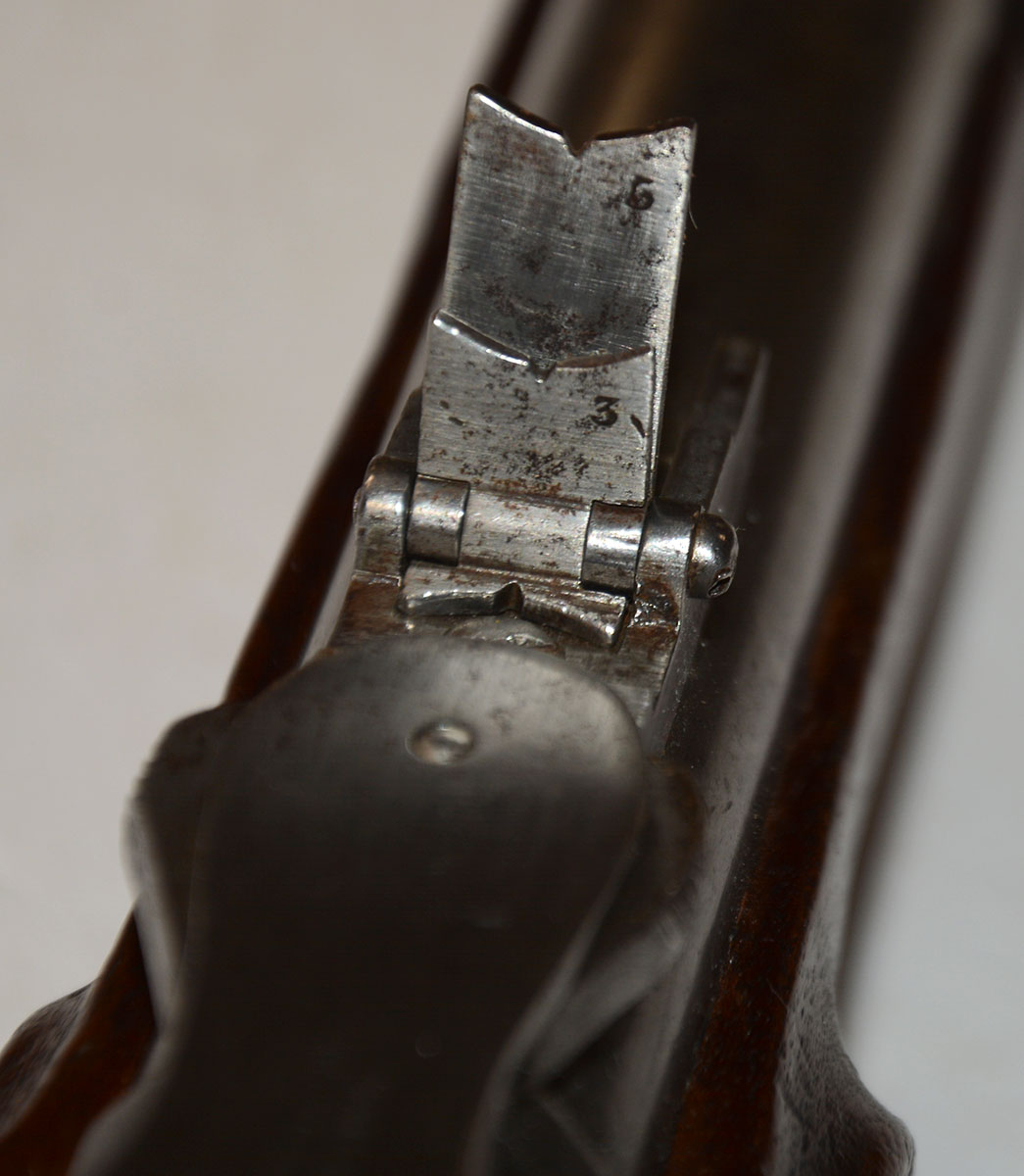


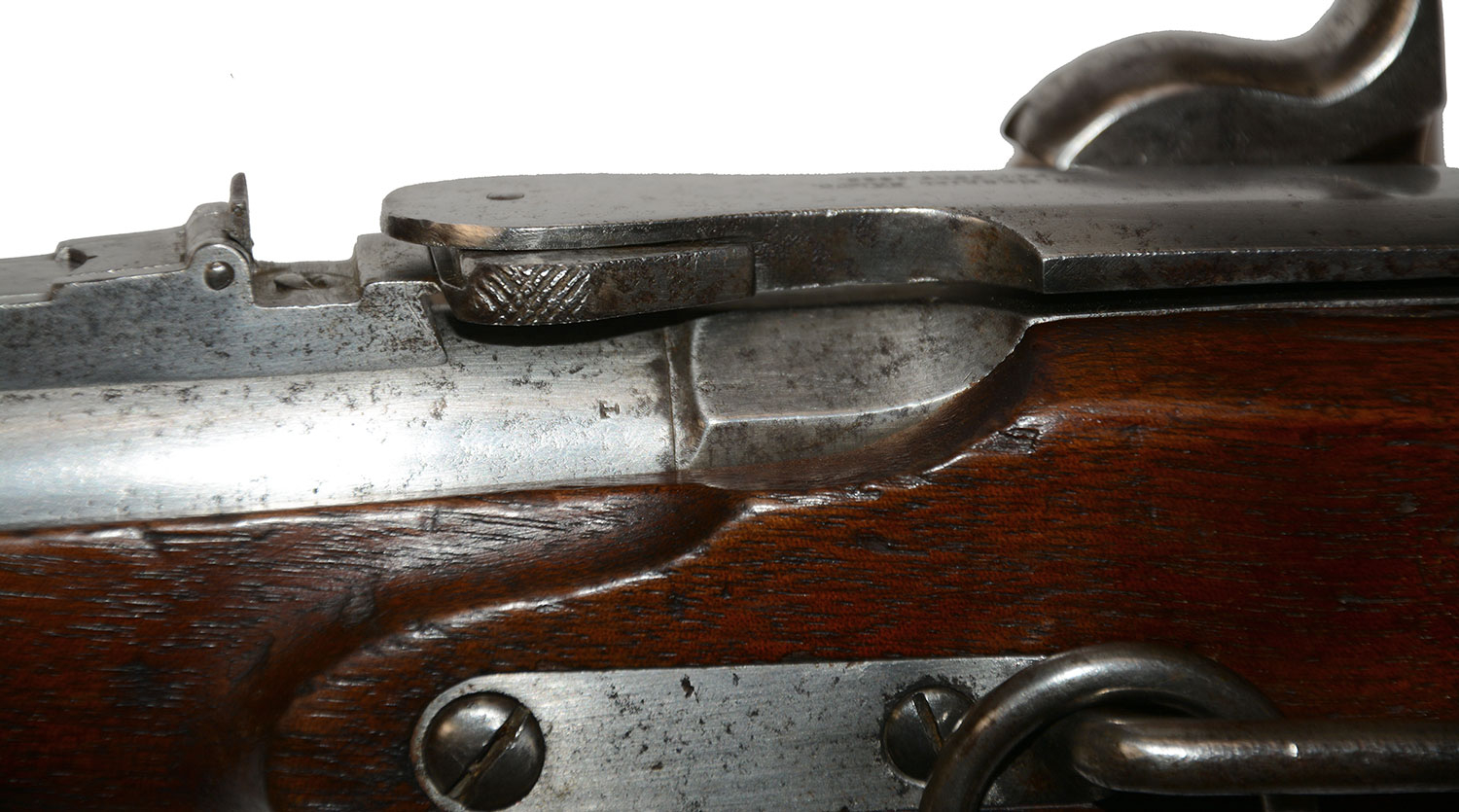
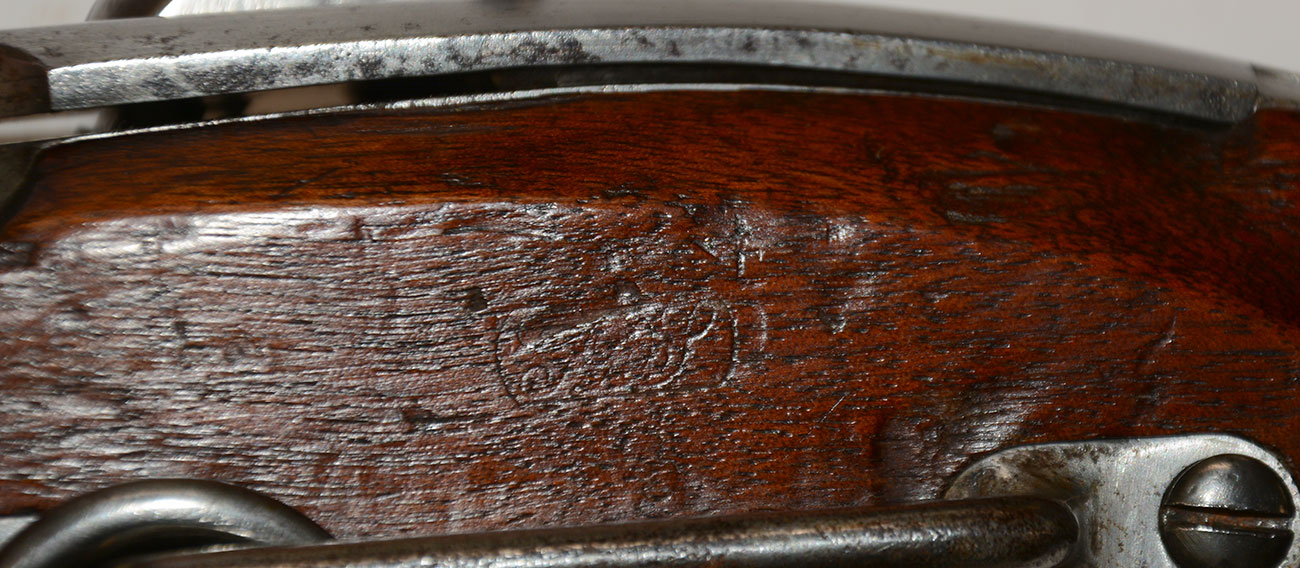



$2,200.00 SOLD
Quantity Available: None
Item Code: 490-3472
This is a good example of the First Model Merrill cavalry carbine that uses a brass buttplate, patchbox, triggerguard, and barrel band, sharply tapered stock tip, and a flat, knurled latch to secure the lever of the breechloading mechanism that, when pulled to the rear, draws back a plunger to admit a new .54 caliber cartridge and then pushes it into place, locking closed behind the carbine’s rear sight. The cartridge was then ignited using a standard percussion cap primer. James Merrill, of Baltimore, had been involved in the small arms business since the 1840s and supplied carbines to the U.S. government as part of Merrill, Latrobe and Thomas in the 1850s. He was also involved in altering Jenks carbines, M1841 rifles, and M1842 muskets to his breechloading system. The government purchased 20 Merrill carbines through an agent in June 1861 and an initial government order for 600 was made in November. The government ended up purchasing some 14,255 Merrill carbines and 770 rifles during the war. The majority of the carbines, something over 10,000 were of this model, with the Second Model coming in during July 1864 and accounting for about 4,100. This one is clearly numbered 8309, which likely puts it in a group of 1,400 made on a contract or order of March 30, 1863, and paid for (and hence delivered by) April 25, 1863. The serial number is bracketed by a few Merrill serial numbers recorded in the 2nd Kentucky Cavalry in June 1863, but a number of other cavalry regiments carried Merrills: the 1st, 5th, 8th and 18th NY; 11th, 17th PA (which had some Merrills at Gettysburg,) 18th PA; 1st NJ; 7th IN, 3rd MI and others.
The wood has pleasing, warm reddish brown tones overall. The bottom of the buttstock and right butt flat show a number of handling dings, pressure dents and shallow scratches. The left has a small incised cross near the butt, along with some shallow scratches and the counterpane shows a number of small dings and some nicks at the forward edge from the sling ring, which is present on the side bar. The edges of the bottom and rear, however, are pretty good and the inspector’s cartouche is visible and clearly the script “GDS” of Granville D. Shattuck, who was a civilian employee at Springfield, worked as a sub-inspector of contract arms, and is reported by Daum and Pate as being assigned to the Merrill operation in March-April 1863 between stints at Colt. The edges of the lock apron are very good. The forestock has minor handling marks and a small chip off the upper edge on the right just behind the barrel band, about where it would be against the rim of the carbine thimble.
The metal is very good, with smooth surface overall. The brass has a medium tone. The patchbox has a tight fit. Its screws show some faint blue. The lid shows some initials lightly scratched in, likely by the trooper. The first letter looks like a “T,” but the rest is indistinct. The barrel is a muted silver gray mixed with some darker gray spots, which is fine for a Merrill since they were supplied both blued and in the bright. The rear sight shows some faint blue. The hammer, receiver and lock are a steel gray with small dark gray spotting. The markings are sharp and legible: J.H. MERRILL BALTO. / PAT. JULY 1858 / APL. 9 MAY 21-28-61. on the lock plate forward of the hammer, and 8309 vertically to the rear of the hammer. The breech lever is marked, J.H. MERRILL BALTO. / PAT. JULY 1858. on the neck near the latch, with the serial number, also 8309, stamped farther back near the hinge. Action works well, although does not hold at half cock. Bore is excellent – clean with good rifling.
DISCLAIMER: All firearms are sold as collector's items only - we do not accept responsibility as to the shooting safety or reliability of any antique firearm. All firearms are described as accurately as possible, given the restraints of a catalog listing length. We want satisfied customers & often "under" describe the weapons. Any city or state regulations regarding owning antique firearms are the responsibility of the purchaser. All firearms are "mechanically perfect" unless noted, but again, are NOT warranted as safe to fire!
~~~~~~~~~~~~~~~~~~~~~~~~~~~~~~~~~~~
THIS ITEM, AS WITH ALL OTHER ITEMS AVAILABLE ON OUR WEB SITE,
MAY BE PURCHASED THROUGH OUR LAYAWAY PROGRAM.
CLICK HERE FOR OUR POLICIES AND TERMS.
THANK YOU!
Inquire About FIRST MODEL MERRILL CARBINE
Most Popular
Historical Firearms Stolen From The National Civil War Museum In Harrisburg, Pa »
Theft From Gravesite Of Gen. John Reynolds »
Selection Of Unframed Prints By Don Troiani »
Fine Condition Brass Infantry Bugle Insignia »
Large English Bowie Knife With Sheath 1870’S – 1880’S »
Imported (Clauberg) Us Model 1860 Light Cavalry Officer's Saber »
featured item
THEFT REPORTED AT AUTUMN GETTYSBURG SHOW
A vendor at the Autumn Gettysburg Civil War show held at the Allstar Events Complex on Oct. 28-29 reported that a Maryland sword belt plate valued at $3500 was stolen from a display case on Sunday afternoon. The Gettysburg Times published a… . Learn More »


